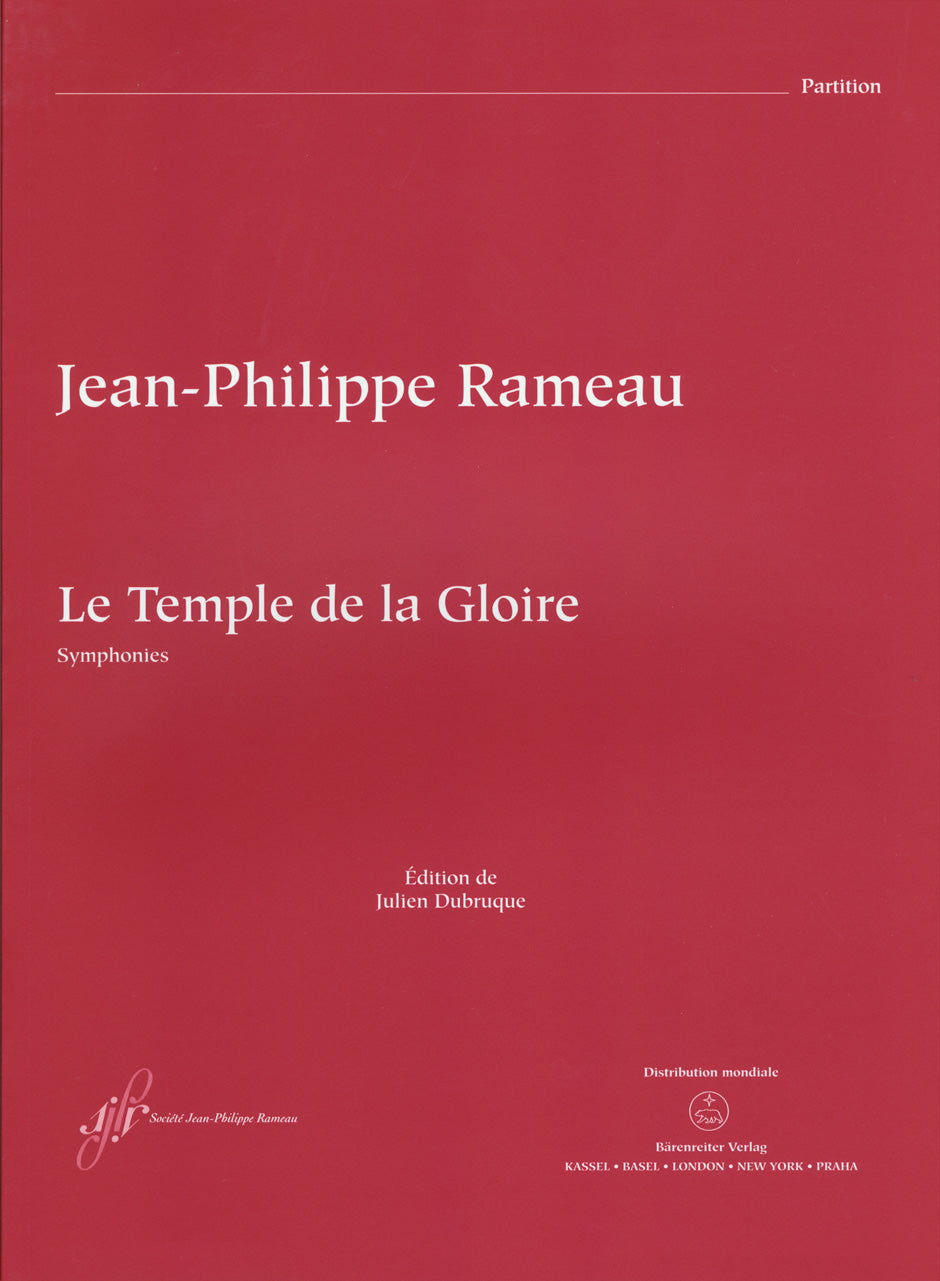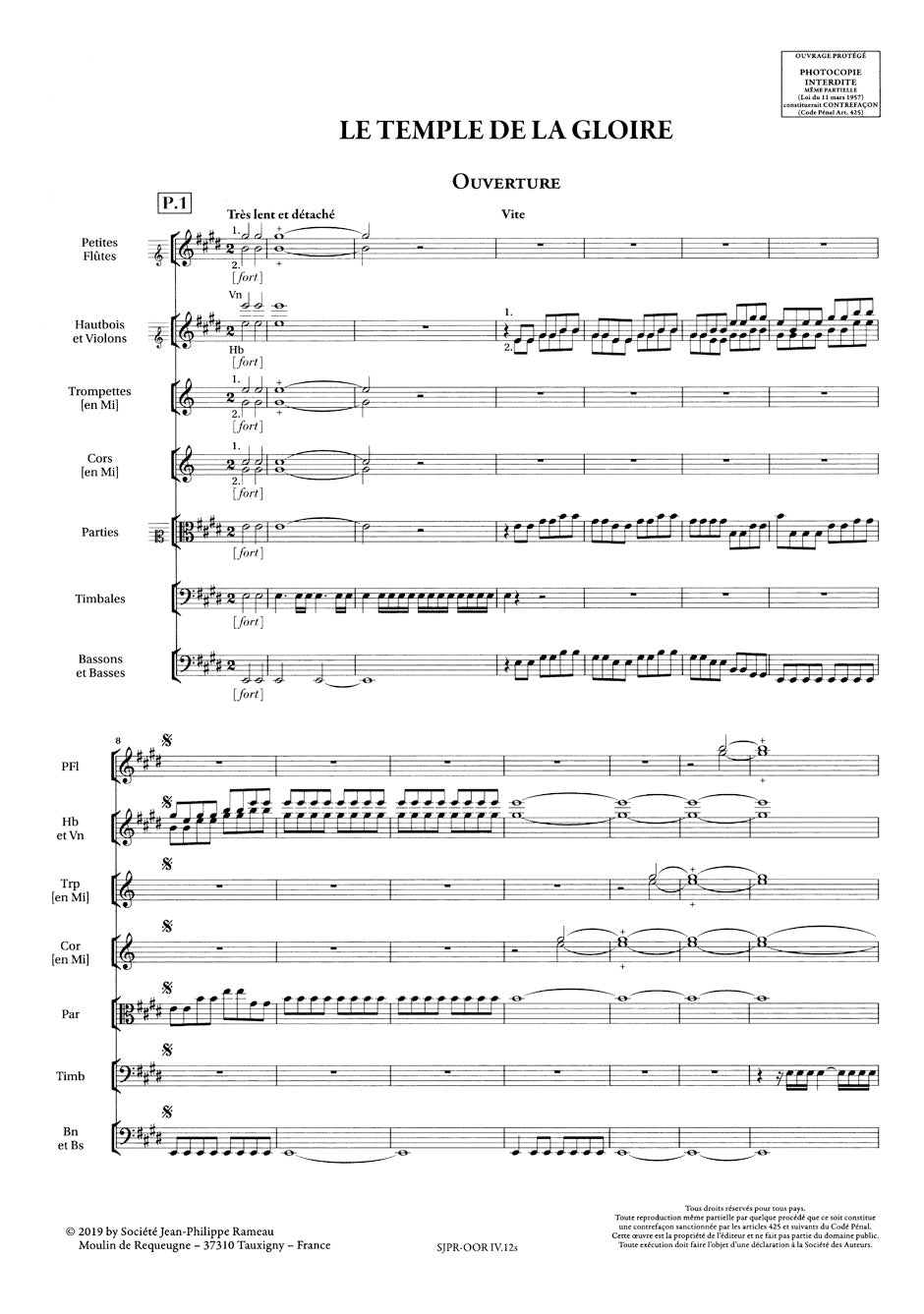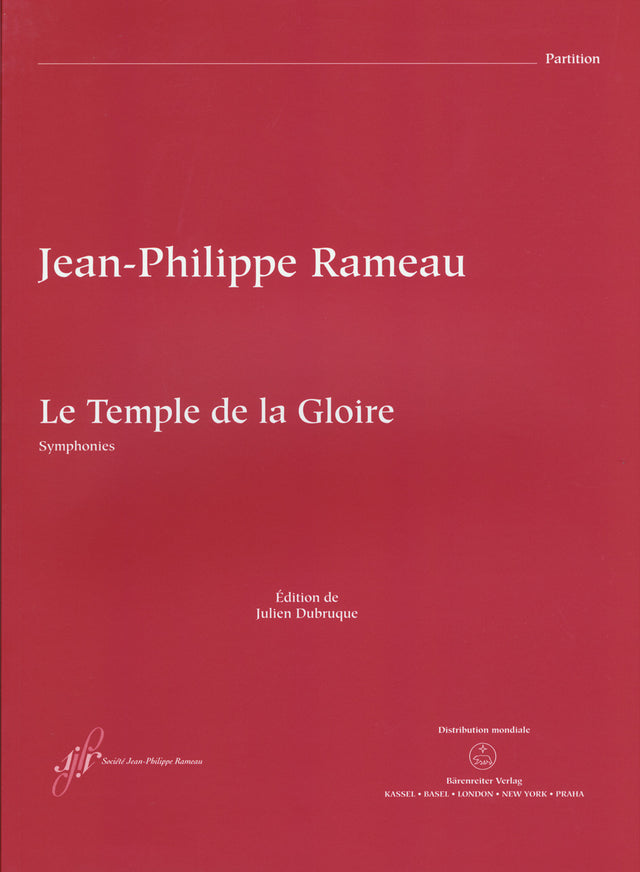Rameau: Symphonies from Le Temple de la Gloire, RCT 59
In stock and typically ships within 1 business day.
- Composer: Jean-Philippe Rameau (1683-1764)
- Editor: Julien Dubruque
- Format: Full Score
- Instrumentation (this edition): Orchestra
- Originally for: Opera
- Work: Le Temple de la Gloire, RCT 59
- ISMN:
- Size: 9.6 x 13.0 inches
- Pages: 61
- Urtext / Critical Edition
Description
Rameau's only extant opera based on a libretto by Voltaire has come down to us in two versions (1745 and 1746), that of 1745 having long been regarded as lost. Volume IV.12 of the "Opera omnia Rameau" now provides a complete edition for the first time and thus the means to perform both versions.
Voltaire refers to Metastasio in his libretto, in that he wanted to liberate the opera from the gallant milieu in order to make it a moralising and at the same time both edifying and political work of art for the stage. Following a prologue dedicated to the personified Envy, the tyrants Bélus and Bacchus are chased out of the Temple of Glory and Trajan is finally crowned with a laurel wreath for defeating the rebels, forgiving them and then transforming the Temple of Glory into a public temple.
The opera's individual instrumental movements are also available in the customary manner now as a practical separate edition.
The performance material is available on hire.
Publishers use a lot of words to describe what they sell, and we know it can be confusing. We've tried to be as clear as possible to make sure you get exactly what you are looking for. Below are descriptions of the terms that we use to describe the various formats that music often comes in.
Choral Score
A score for vocalists that only contains the vocal lines. The instrumental parts are not there for reference. Generally, cheaper than a vocal score and requires multiple copies for purchase.
Facsimile
Reproductions of the original hand-written scores from the composer.
Full Score
For ensemble music, this indicates that the edition contains all parts on a single system (there are not separate parts for each player). In larger ensembles, this is for the conductor.
Hardcover
Hardbound. Generally either linen-covered or half-leather.
Orchestral Parts
Similar to a wind set, this is a collection of parts. In the case of strings, the numbers listed are the number of copies included, though generally these are available individually (often with minimum quantities required).
Paperback
When publishers offer multiple bindings (e.g. hardcover) or study scores, this is the "standard" version. If you're planning to play the music, this is probably what you want.
Performance / Playing Score
A score of the music containing all parts on one system, intended for players to share. There are not separate parts for each player.
Set of Parts
For ensemble music, this indicates that there are separate individual parts for each player.
Solo Part with Piano Reduction
For solo pieces with orchestra, this is a version that contains a piano reduction of the orchestra parts. For piano pieces, two copies are typically needed for performance.
Study Score
A small (think choral size) copy of the complete score meant for studying, and not playing. They make great add-ons when learning concertos and small chamber works.
Vocal Score
A score prepared for vocalists that includes the piano/organ part or a reduction of the instrumental parts.
Wind Set
For orchestral music, this is a collection of wind and percussion parts. The specific quantities of each instrument are notated.
With Audio
In addition to the printed music, the edition contains recordings of the pieces. This may be an included CD, or access to files on the internet.
With / Without Fingering (Markings)
Some publishers prepare two copies - a pure Urtext edition that includes no fingering (or bowing) suggestions and a lightly edited version that includes a minimal number of editorial markings.





